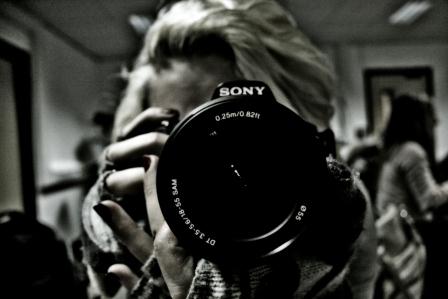
Pace offers approximately 97 majors on the Pleasantville campus according to the Pace University website. Additionally, Dyson College of Arts and Science offers close to 44 minors that are not linked to either campus. This gives students the chance to consider several majors and minors before committing to one or another.
One of the several minors that is offered is photography, a field that has become increasingly more popular in the past few years and has become an important aspect not just as an art form but as a media form as well.
According to the requirements listed on the photography minor sheet, if a student wishes to be photography minor he or she is required to participate in 15 credits worth of photography classes. This translates to five photography based courses that are designed to show the student the multiple branches of photography as both an art form and as a visual expression.
These classes include an Introduction course that teaches the students the basic camera functions and creative vision, an advance class known as Photography II: Color that teaches the completely different process of color photography.
After the two required courses, the student has the options to pick three of five elective photography courses to complete the minor. The courses that are listed on the website include Photography II: Creative Photography in Black and White, which focuses on more specialized processes and proceeds to teach students about technique and exploration with materials and elemental processing; Photography III: Experiential photography, that aims to explore more unique project ideas, and Art History: History of Photography, Photography II, and Special Topics in Advance Photography.
Of these seven classes that compile to make the Photography minor, since fall of 2009 only three have been successfully offered at the Pleasantville campus.
“If Pace Pleasantville is going to offer photography as a minor then they should try to offer more in the way of courses,” said senior English and communications major Amanda Morey. “I realize there could perhaps be financial issues but I think it would be great if they tried to do more. I thought about adding photography as a second minor, but there are only a few courses offered so it’s difficult to complete the minor.”
This semester alone there are 10 introduction photography classes being offered between six professors. Of the 10, six are held on the New York City Campus in addition to three advance classes. Pleasantville only has four introduction courses.
The lack of classes offered leaves an important question, how does a student complete the minor?
When classes are not offered to fulfill a minor, the student has very few options left to them. They could give up on the minor if the number of classes is not offered by graduation, they can also travel to the city and take the course at the city campus, they could take the classes at another school and try to transfer the credits over, or finally the student can take independent studies, similar to “creating your own class” to replace the classes not offered.
Chairman of the media communications and visual arts department Robert Klaeger explains the administrative aspect of course selection.
“The problem with offering a minor that can successfully run is that the classes must fill,” said Klaeger. “Without a critical mass of students to run a major, a minor cannot be run. You see, running a course that does not fulfill an Area of Knowledge (AOK) means that a very committed bunch of students must take it. In other words, if majors take a course, then the course is offered on a timely basis and students can take that course as minors,
“There are only a dozen or so Art majors at Pleasantville, and much as I’d like to see many more, they don’t exist. Without majors to drive the advanced courses they don’t run for lack of enrollment, disappointing both the student and the professor.”
Prof. Robert Klaeger has been chairman of the visual arts department for four years and also states that it is New York City, not Pleasantville, who hosts the Photography minor. This is not specified on the website.
“They should lower the number of students needed to make the additional courses happen until the word of photography minor on the campus grows,” said inspiring photography minor and senior media communications major Nadine Weilersbacher. “I don’t think enough students on campus know that it’s offered … I think it will have a really good turnout. We have a lot of creative students on campus that don’t get a chance to express it because the courses aren’t offered.”
Weilersbacher has taken three photography classes and is looking into independent studies to complete her minor.
According to Robert Kozma, an adjunct professor that teaches photography on both the New York City and Pleasantville, there has been a rise in the number of students interested in the minor.
“I don’t have access to official numbers but the past few years I have dealt with many more students looking to study towards a minor in photography,” said Kozma.
There are currently four students at Pace University Pleasantville that are working towards photography minors. Each of them has had to or plans to create their own program to fulfill the requirements of the minor.
Whether it is the campus atmosphere, department money, or a changing medium, photography minors are possible at the Pleasantville campus if the student has the drive to persue it and the administration departments are willing to work with the student.
“Although it is definitely harder to finish my minor without the classes offered, as long as Pace is willing to work with me in order make classes and independent studies to fit my minor, I’m happy,” said senior communication major Allie Olender. “So far, Pace has been accommodating. However, it would be cool to have other classes offered and have more darkroom equipment.”
